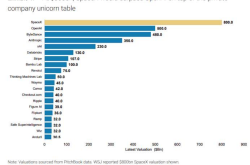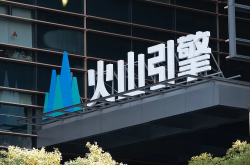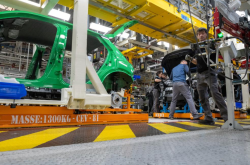Redmi K80 Supreme Edition Review: Flagship-Level Features Beyond Just Performance
![]() 06/19 2025
06/19 2025
![]() 704
704
Despite the ever-intensifying competition in the mid-range smartphone market, this year has seen an unprecedented surge in rivalry. Modern users now demand more than just high performance from their devices in this price bracket; they seek comprehensive excellence across various dimensions, encompassing performance, aesthetics, texture, charging speed, battery life, and screen quality.
In essence, current mid-range models are now "fully equivalent" or even superior to flagship devices in all aspects except imaging, reflecting an almost fanatical drive to outperform even their own flagship lineups.
Recently, I had the privilege of reviewing the newly released Redmi K80 Supreme Edition. Let's delve into the response delivered by Redmi, which is often hailed as the benchmark for cost-effectiveness.
A Symphony of Elegance and Ruggedness
Unlike Xiaomi's digital series, Redmi's K series undergoes significant design changes with each generation. Sometimes the designs are classic and elegant, while at other times, they are bold and eye-catching. Beauty is subjective, but when it comes to innovation and distinctiveness, Redmi's K series definitely stands out in the recent smartphone market.
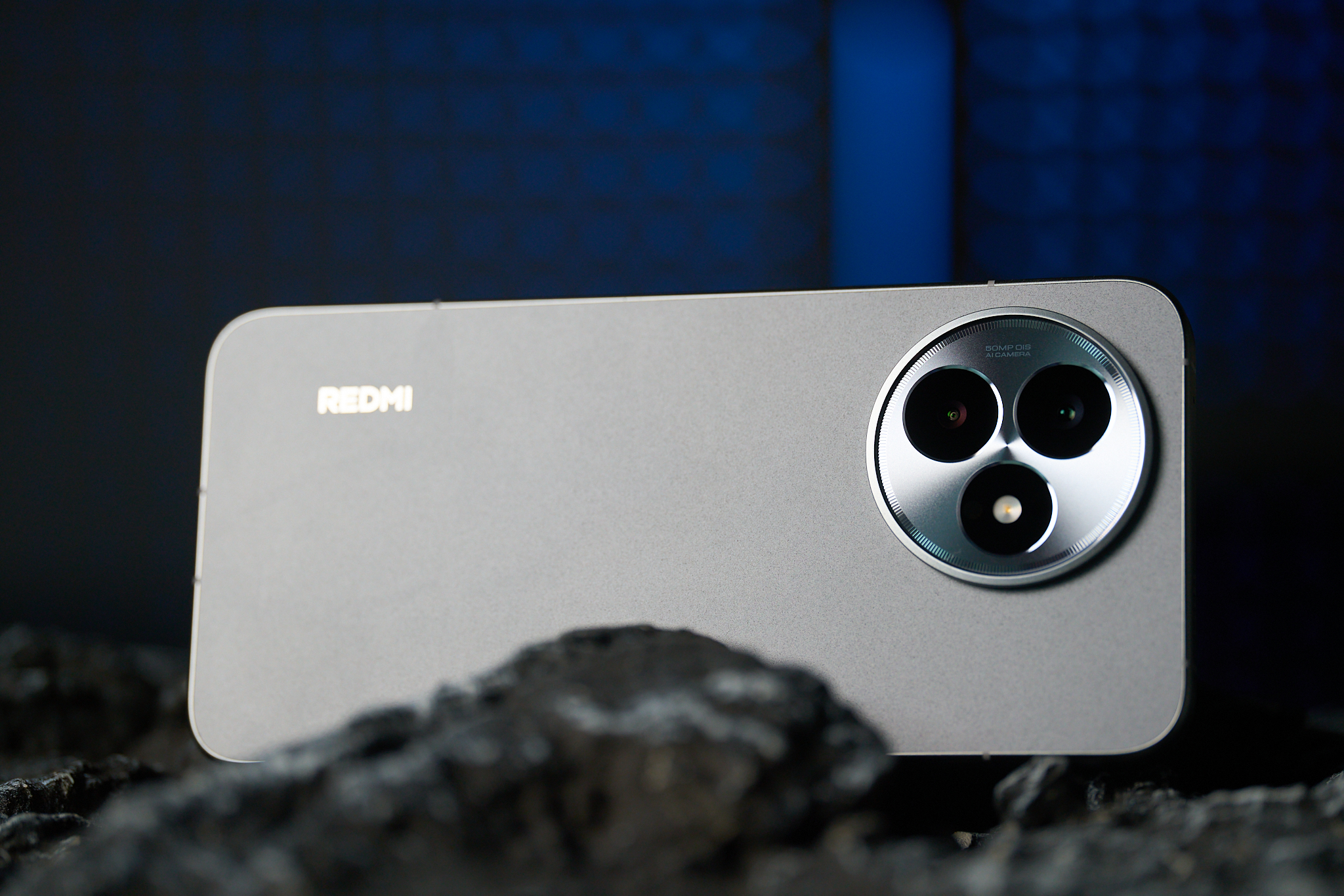
(Image Source: Leitech Drawing)
The Redmi K80 Supreme Edition continues the design language of the K80 series with a few tweaks. For instance, the camera module still adopts a circular design on the top left, and the empty space in the middle is filled with color (the Spruce Green and Glacier Blue versions feature a fully black camera module). Compared to previous Redmi K series phones, it has become notably more refined.
However, in terms of overall design, the Redmi K80 Supreme Edition has its own unique identity. The right-angle frame and dual-sided flat design, coupled with the Sandstone Gray color variant I received, give it a particularly rugged feel. Therefore, I recommend using a phone case for added protection.
It's worth mentioning that in an era where many manufacturers are forced to use plastic frames due to cost constraints, the Redmi K80 Supreme Edition still opts for a metal frame, and the difference in texture is immediately apparent.
On the front, the Redmi K80 Supreme Edition boasts a 6.83-inch Green Hill Eye-care Gaming Screen with impressive specifications: 2772*1280 resolution, 144Hz refresh rate, 480Hz touch sampling rate, up to 3200 nits brightness, M9 emission material, 12-bit color depth, support for Green Hill Eye-care features, full-brightness DC dimming, circular polarized light, low blue light, and professional true-color display.

(Image Source: Leitech Drawing)
Thanks to the narrow-bezel FIAA process shared with the Xiaomi 15 series, the screen of the Redmi K80 Supreme Edition offers an exceptional viewing experience. The narrow bezels and evenly narrow sides provide a visual experience on par with flagship phones. Coupled with the well-optimized large R-angle design, the overall appearance can be described as "premium."

(Image Source: Leitech Drawing)
In terms of unlocking, the Redmi K80 Supreme Edition meets expectations with no downgrades, featuring the same single-point ultrasonic fingerprint unlocking technology as flagship phones. Compared to ordinary optical fingerprint unlocking, it offers faster unlocking speeds and higher recognition accuracy, especially considering that many devices in this price range still use inferior short-focus fingerprint technology.
Judging solely by appearance and screen, the Redmi K80 Supreme Edition might seem indistinguishable from the Redmi K80, as it also belongs to the K80 series and a major redesign isn't necessary. However, overall, its texture and build quality are quite impressive, and it's hard to believe it's a mid-range product priced at just over 2000 yuan upon handling.
Initially, I thought these were all the peripheral configurations of the Redmi K80 Supreme Edition. However, during the battery life test, I suddenly noticed that the sound quality of the speakers was somewhat different. Compared to my other phones, it not only has a louder volume but also a richer sound. This is because it is equipped with two master-level coaxial 1115 speakers of the same specification, which are currently the highest-positioned smartphone speakers on the market.
In actual tests, at 50% volume, the sound is already comparable to 80% volume on mainstream phones. When playing music, you can clearly feel that the low-frequency part is more stable, reminding me of the Xiaomi 10S, which was once hailed as the "music phone." I didn't expect this level of audio quality to be "reincarnated" in this way.
Besides the speakers, the motor of the Redmi K80 Supreme Edition has also undergone a significant upgrade. It is equipped with a custom CyberEngine Ultra ultra-wideband cyber motor, currently the strongest vibration motor in the Android camp. Words alone can't fully describe the motor experience, so I recommend experiencing it in person at offline stores after the product's release.
Actually, from the upgrades in speakers and motors, we can already see that the Redmi K80 Supreme Edition is determined to enhance the gaming experience for gamers. Sound and vibration feedback are arguably the two most important factors besides performance, but these two aspects have been selectively ignored by many manufacturers. The Redmi K80 Supreme Edition's focus on these details demonstrates their deep concern and attention to gamers.
Dual-Chip + Turbo Engine 4.0: Unveiling the Powerhouse
Performance is Redmi's forte. Since the inception of the K series, its performance has always been at the top level in the industry, even rivaling many flagship models. The Redmi K80 Supreme Edition does not disappoint in terms of configuration, with the powerful combination of the Dimensity 9400+ processor and the new generation gaming-specific graphics chip D2 designed specifically for gaming and high-performance scenarios.
The Dimensity 9400+ is already a familiar friend, so I won't elaborate too much here. However, the D2 processor deserves special attention. It adopts a 12nm process technology and includes an independent hardware AI module, bringing two major functions: AI super-resolution model and self-developed dynamic frame interpolation technology. Although these two functions may be familiar to many, the frame interpolation and super-resolution performance of the Redmi K80 Supreme Edition exceed expectations. We'll delve into its specific performance later.
In essence, the presence of the D2 processor helps enhance and optimize the phone's multimedia and gaming experience while reducing the SoC's resource consumption during processing, enabling better performance in high-load scenarios.
In theoretical performance tests, the Redmi K80 Supreme Edition scored 2.94 million points in the AnTuTu benchmark test, 2709 points in the Geekbench 6 single-core test, and 8315 points in the multi-core test, still belonging to the first tier in the Android camp. Moreover, it's worth mentioning that due to its internal 6500mm² dual-stage convex icy cycling cold pump, the phone only feels slightly warm after three theoretical tests, unlike some phones that overheat with a single test.
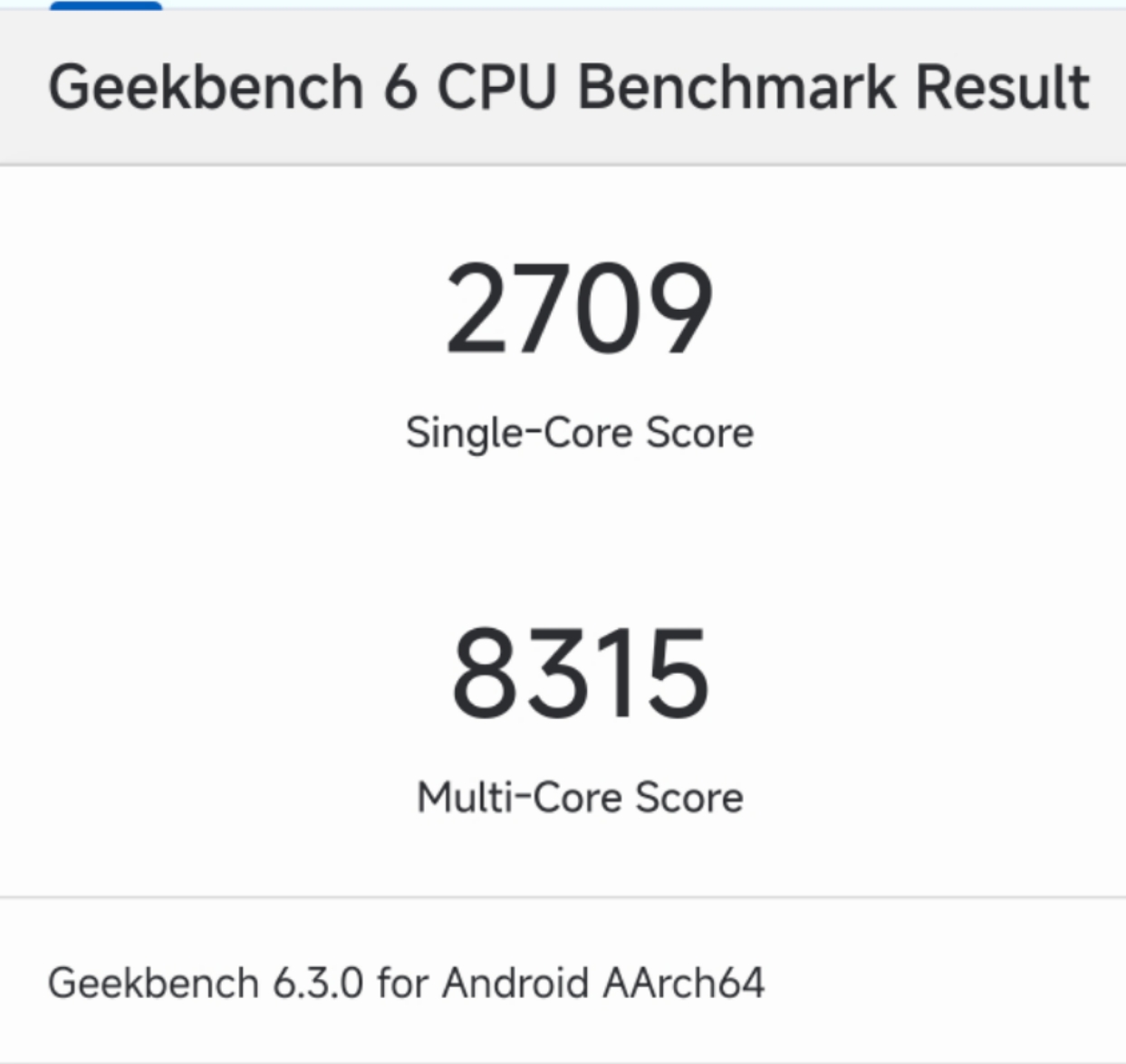
(Image Source: Leitech Drawing)
Moving on to practical tests, under conditions of 25°C room temperature, 70% brightness, 30% volume, maximum graphics settings, and 60 frames per second, the Redmi K80 Supreme Edition's default rendering resolution in "Genshin Impact" is 864P. After 15 minutes of gameplay, the average frame rate reached 60.1 frames per second, with an average power consumption of 4.33W, without any fluctuations or lags throughout.
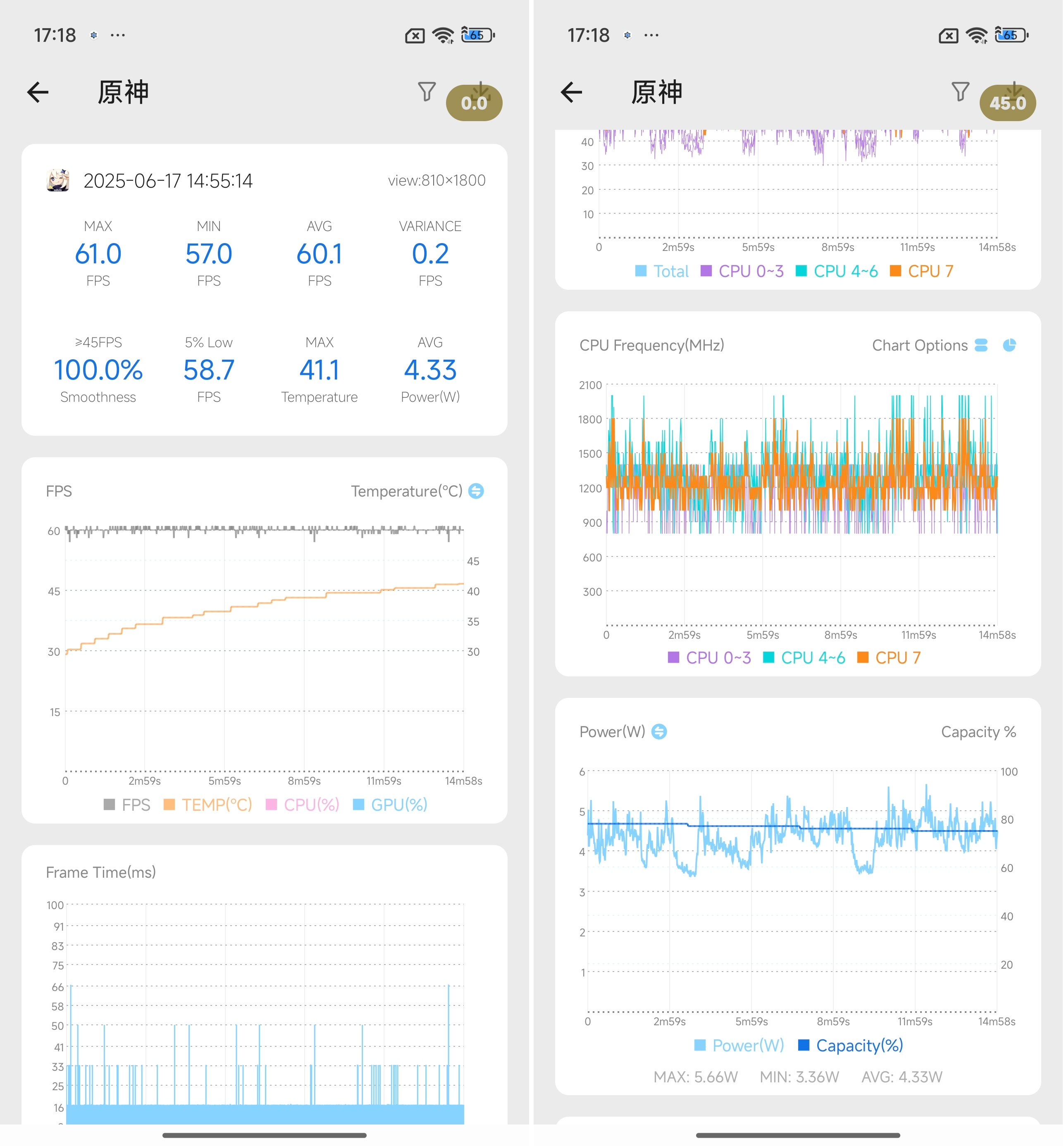
(Image Source: Leitech Drawing)
It can be said that "Genshin Impact" poses no threat to current smartphones. Redmi is well aware of this, so we can enable the "Super Resolution" and "Smart Frame Interpolation" options in the built-in game center to provide players with an even better gaming experience while further unleashing the processor's performance.
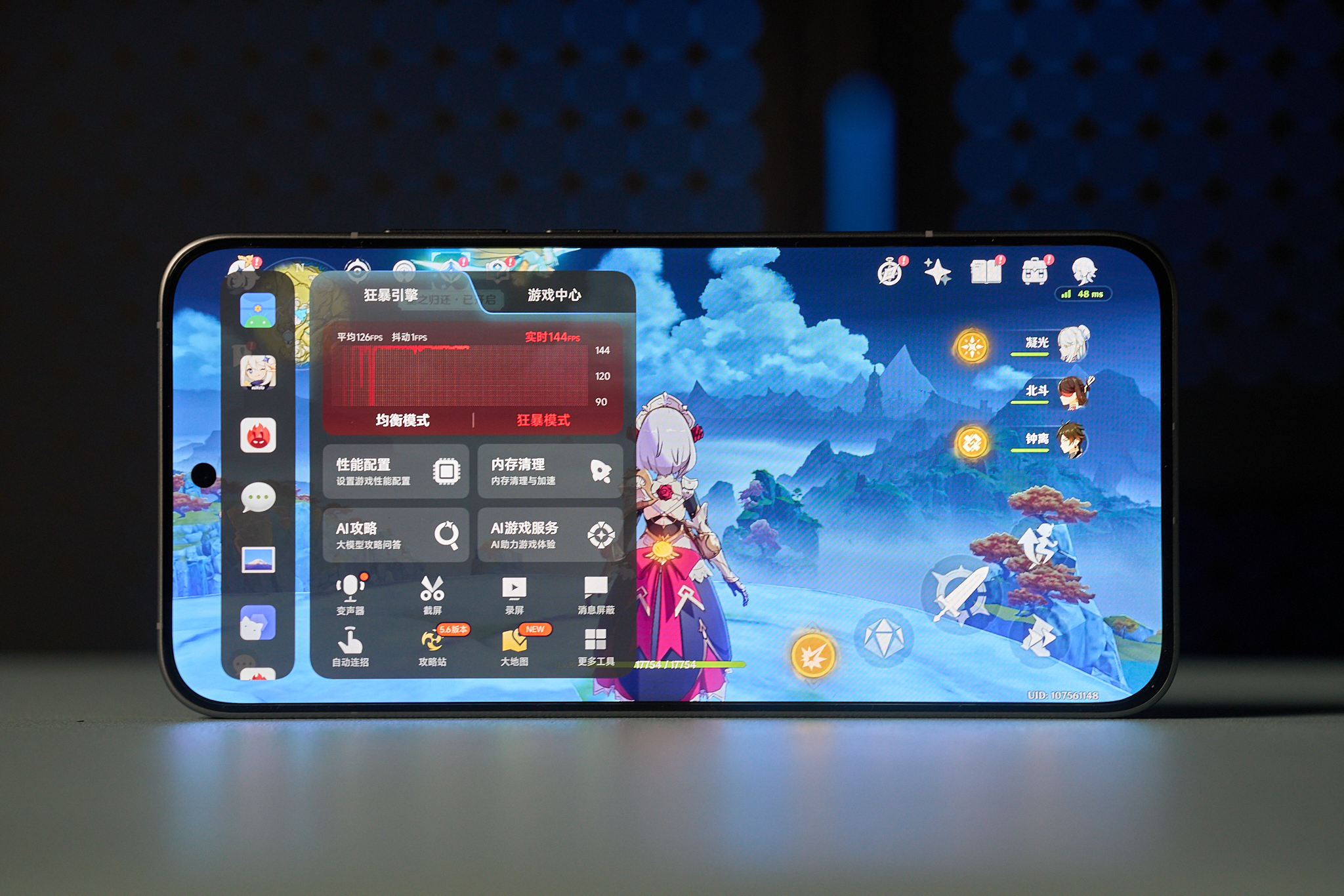
(Image Source: Leitech Drawing)
First, let's talk about the former. We mentioned earlier that the native rendering resolution of the Redmi K80 Supreme Edition is 864P, but enabling Super Resolution can boost it to 1.5K, and it's a true native 1.5K resolution. The difference is clearly visible in this comparison image.
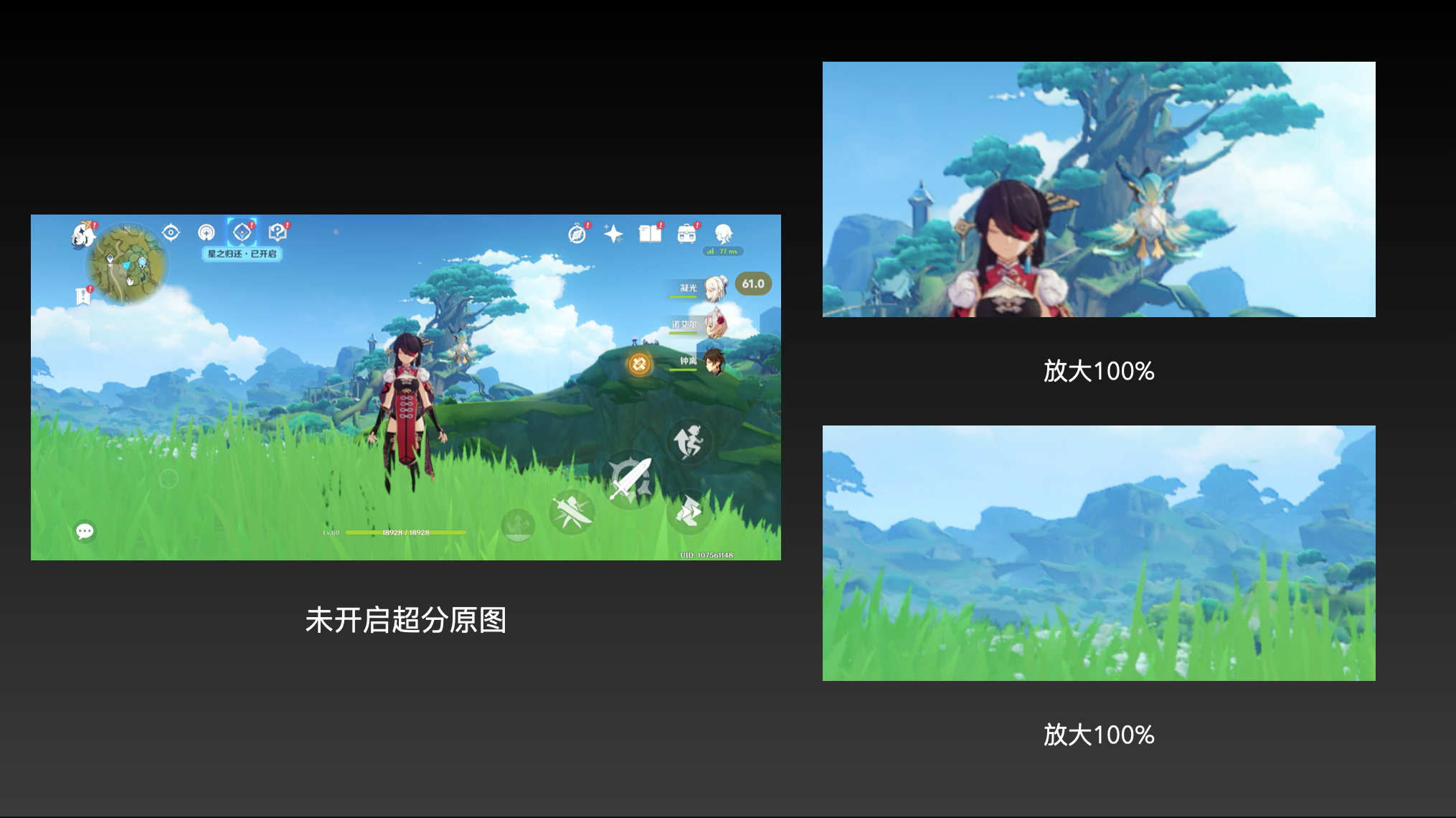
(Image Source: Leitech Drawing)
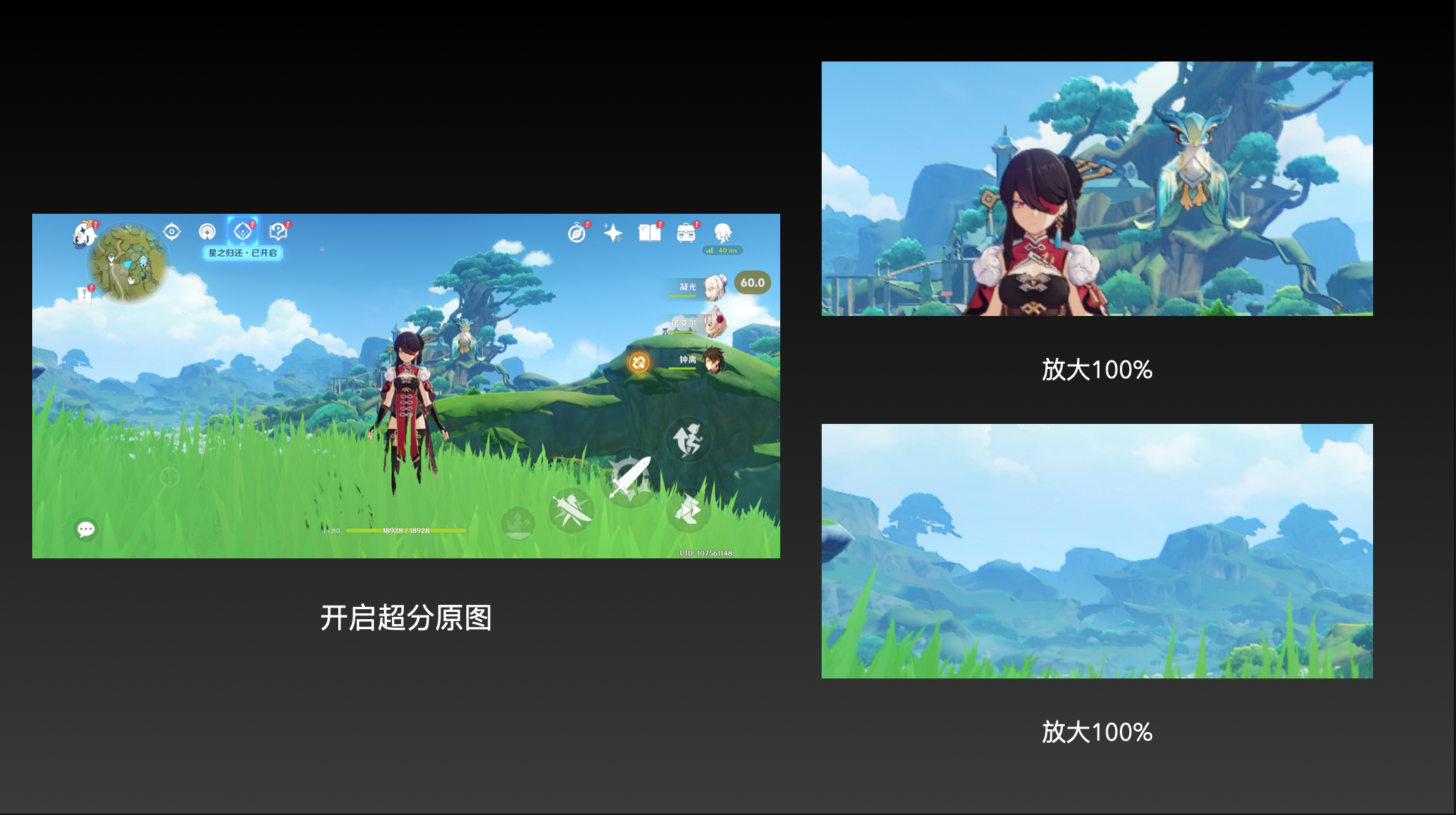
(Image Source: Leitech Drawing)
However, it must be said that "Genshin Impact" is indeed an older game, and its texture quality has fallen behind public demand.

(Image Source: Leitech Drawing)
Of course, if you wish, you can also enable the Smart Frame Interpolation function. At this point, the frame rate displayed by the frame rate testing software will drop to around 45-50 frames per second, but Xiaomi's built-in frame rate software can detect that the frame rate has been boosted to a maximum of 144Hz. During the ten-minute gameplay, the average frame rate reached around 110 frames, performing exceptionally well. However, it's noticeable that the operation delay is slightly higher. If the frame rate after interpolation could be locked at around 120 frames per second, the experience would be even better.
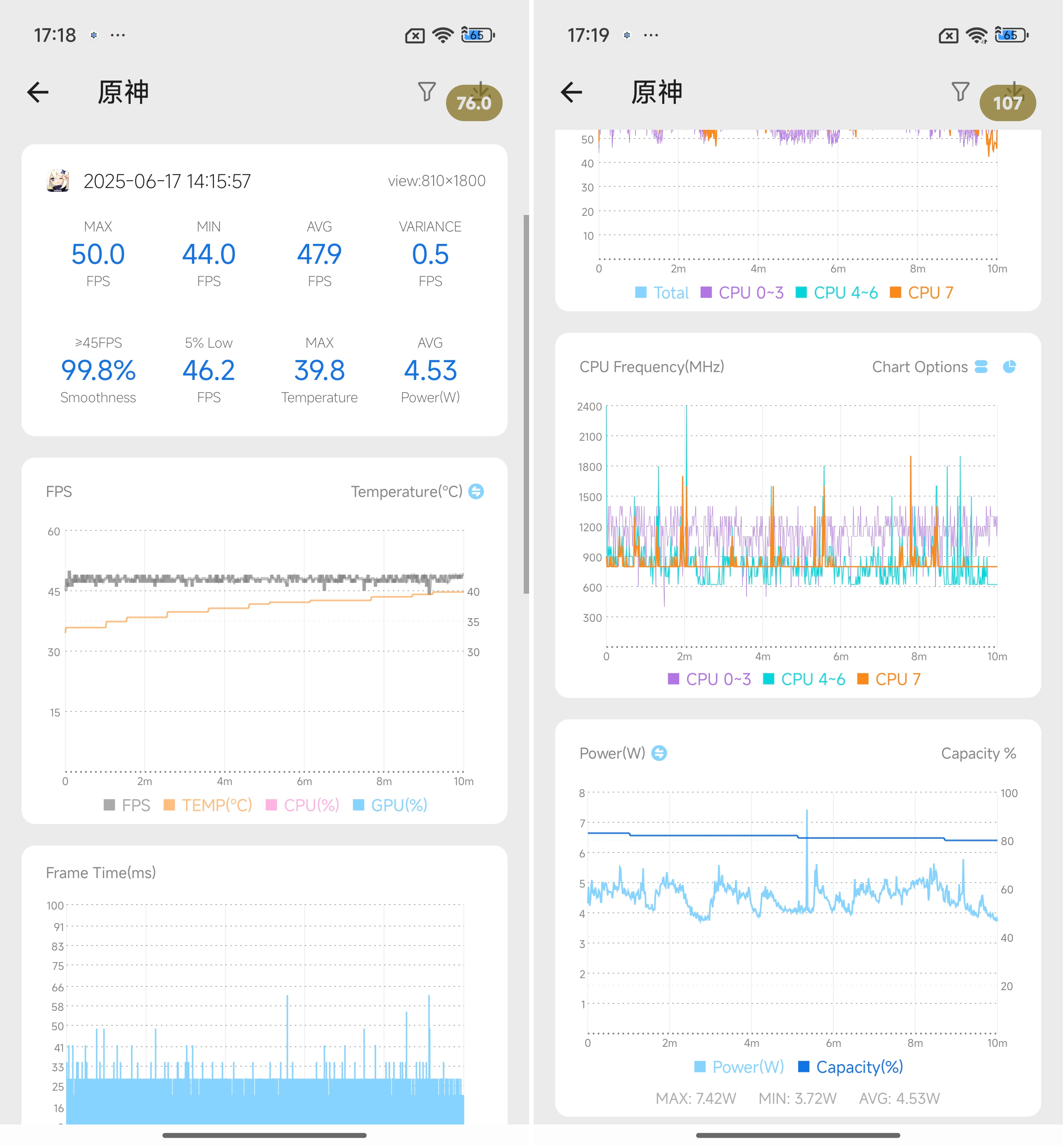
(Image Source: Leitech Drawing)
Initially, I thought that enabling the super-resolution and frame interpolation functions would significantly increase the chip's power consumption, but the final results showed an average frame rate power consumption of 4.53W and a peak power consumption of 7.42W, which was completely unexpected.
Let's take a look at another performance-demanding game, "Honkai: Star Rail." With the default resolution, after 30 minutes of gameplay, the average frame rate was 58.8 frames per second, and the average power consumption was 3.8W. Apart from brief lags due to game optimization issues, the overall gameplay was smooth and fluid, demonstrating excellent performance.
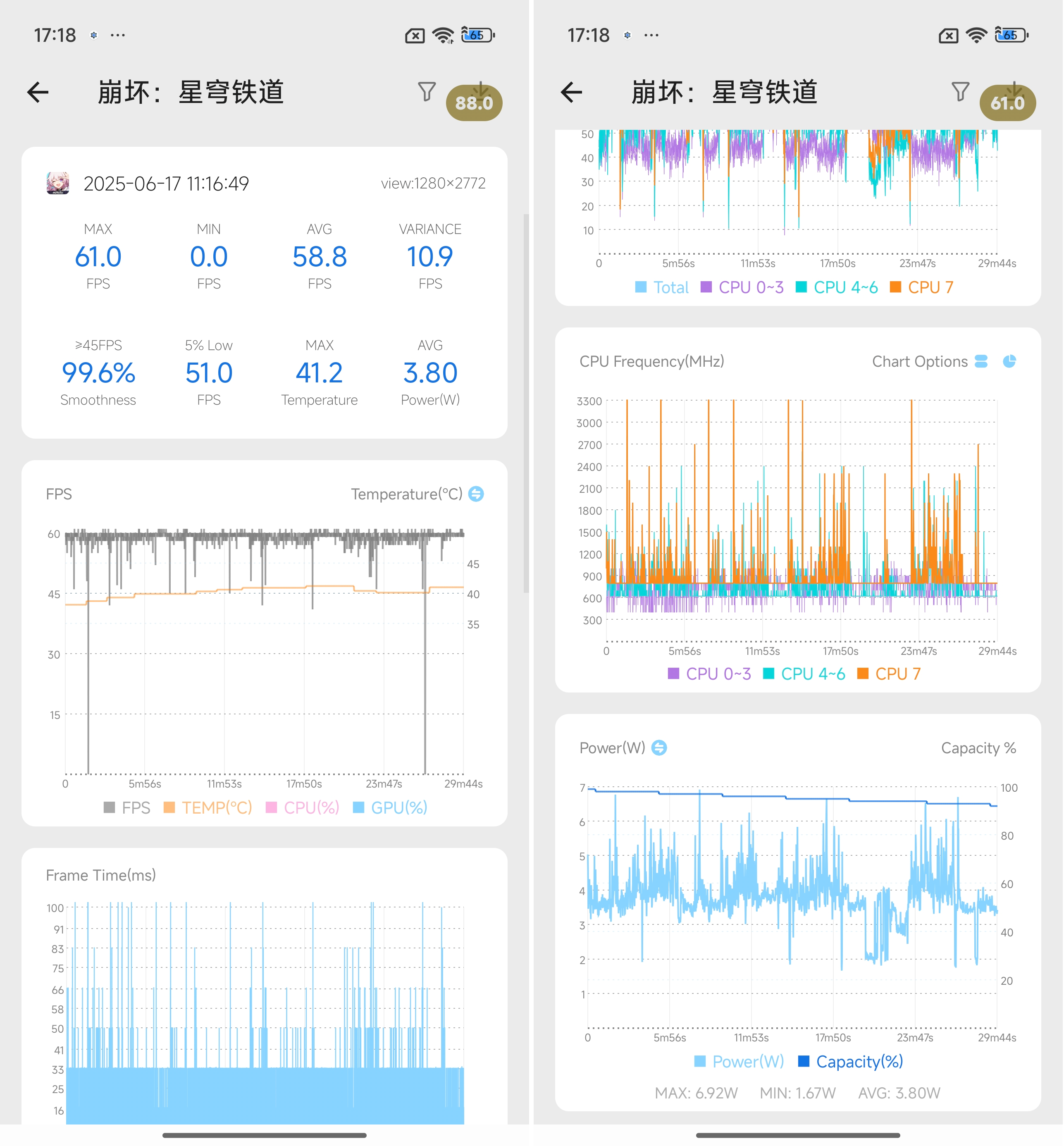
(Image Source: Leitech Drawing)
Similarly, "Honkai: Star Rail" also supports Xiaomi's official "Super Resolution" and "Smart Frame Interpolation" functions, with rendering resolution and frame interpolation performance identical to "Genshin Impact," so I won't elaborate further here. Moreover, perhaps due to the better texture quality of "Honkai: Star Rail," it's difficult to discern whether super-resolution is enabled with the naked eye.
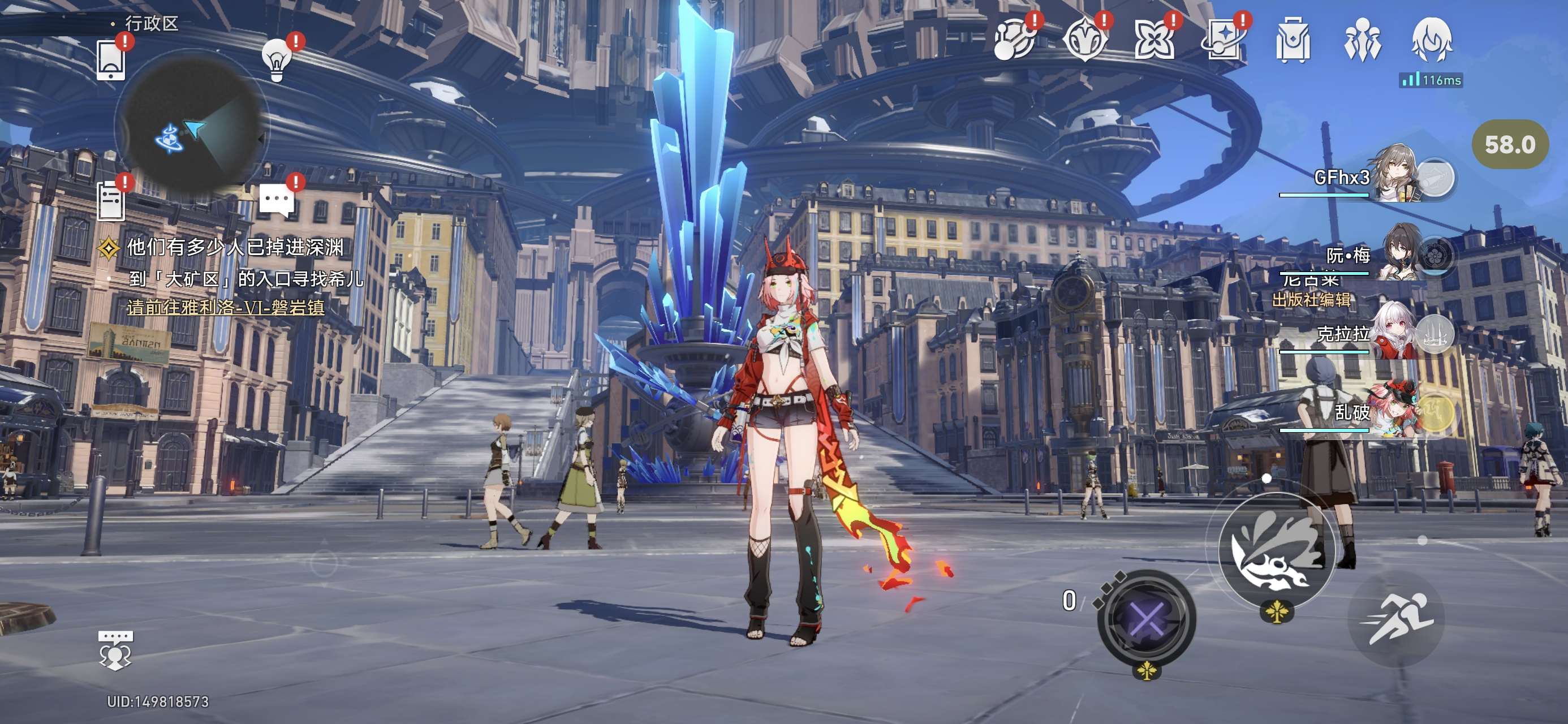
(Image Source: Leitech Drawing)
High-performance games have one drawback: high power consumption leads to higher heat generation. With the support of the dual-stage convex icy cycling cold pump, the Redmi K80 Supreme Edition quickly warms up when entering high-performance demand scenarios, but there is no concentrated heat source throughout the phone, allowing it to maintain this warm state for a sufficiently long time.
After completing the above performance tests, the Redmi K80 Supreme Edition did not experience overheating or frequency reduction. The heat was evenly distributed from the back to the frame, and it didn't feel scorching. However, given the weather in Guangzhou, I still recommend playing games in a cool indoor environment.
As for the two low-load mobile games, "Honor of Kings" and "Game for Peace," based on the above performance, you can probably guess the results. Achieving a full 120 frames per second is effortless.
7410mAh Battery: A Powerhouse that Lasts
The battery life is worth mentioning. Amazingly, Redmi has managed to cram a massive 7410mAh battery into the phone despite the large-size cooling measures and a body weight of only 219g. Although there are a few manufacturers on the market that have already achieved 8000mAh battery capacities, the Redmi K80 Supreme Edition seems to be the only one that combines high performance with a large battery.
The advantages of an ultra-large-capacity battery are obvious. In actual tests, playing a 4K movie at 100% brightness and 50% volume resulted in a battery drop of only 16% after two hours. Playing "Genshin Impact" for half an hour only decreased the battery by 5%. Based on my daily usage habits (responding to WeChat messages, scrolling through TikTok, watching videos, and playing Teamfight Tactics), the Redmi K80 Supreme Edition can easily last 1.5 to 2 days without needing a recharge.
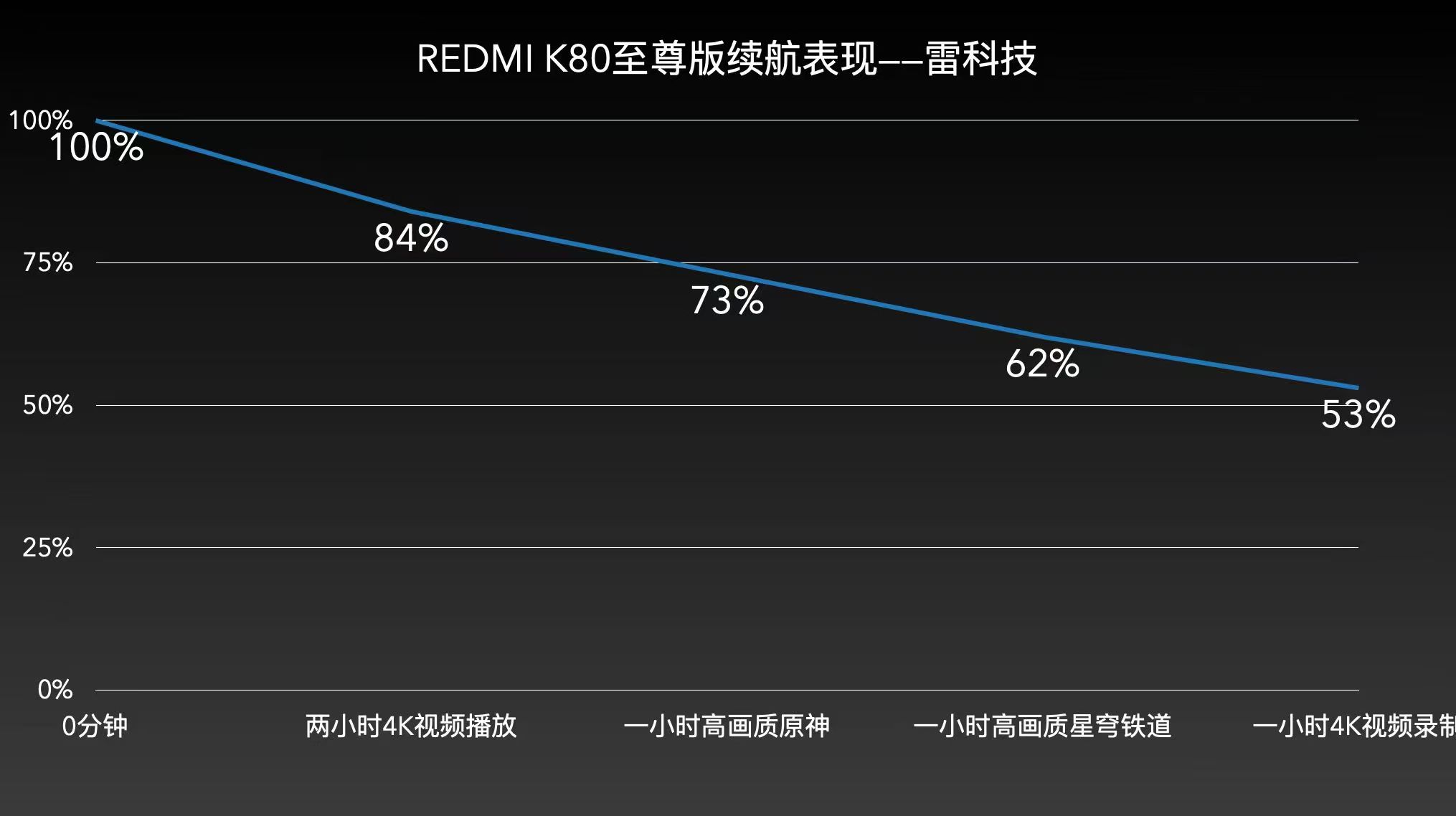
(Image Source: Leitech Drawing)
However, the only drawback of a large-capacity battery is slower charging speeds. The days of fully charging a phone in half an hour are long gone. Nowadays, most phones take an hour or even more to fully charge. Fortunately, the Redmi K80 Supreme Edition is equipped with 100W wired fast charging and the P1 Turbo chip. Enabling the extreme charging mode in the settings can maximize the charging power.
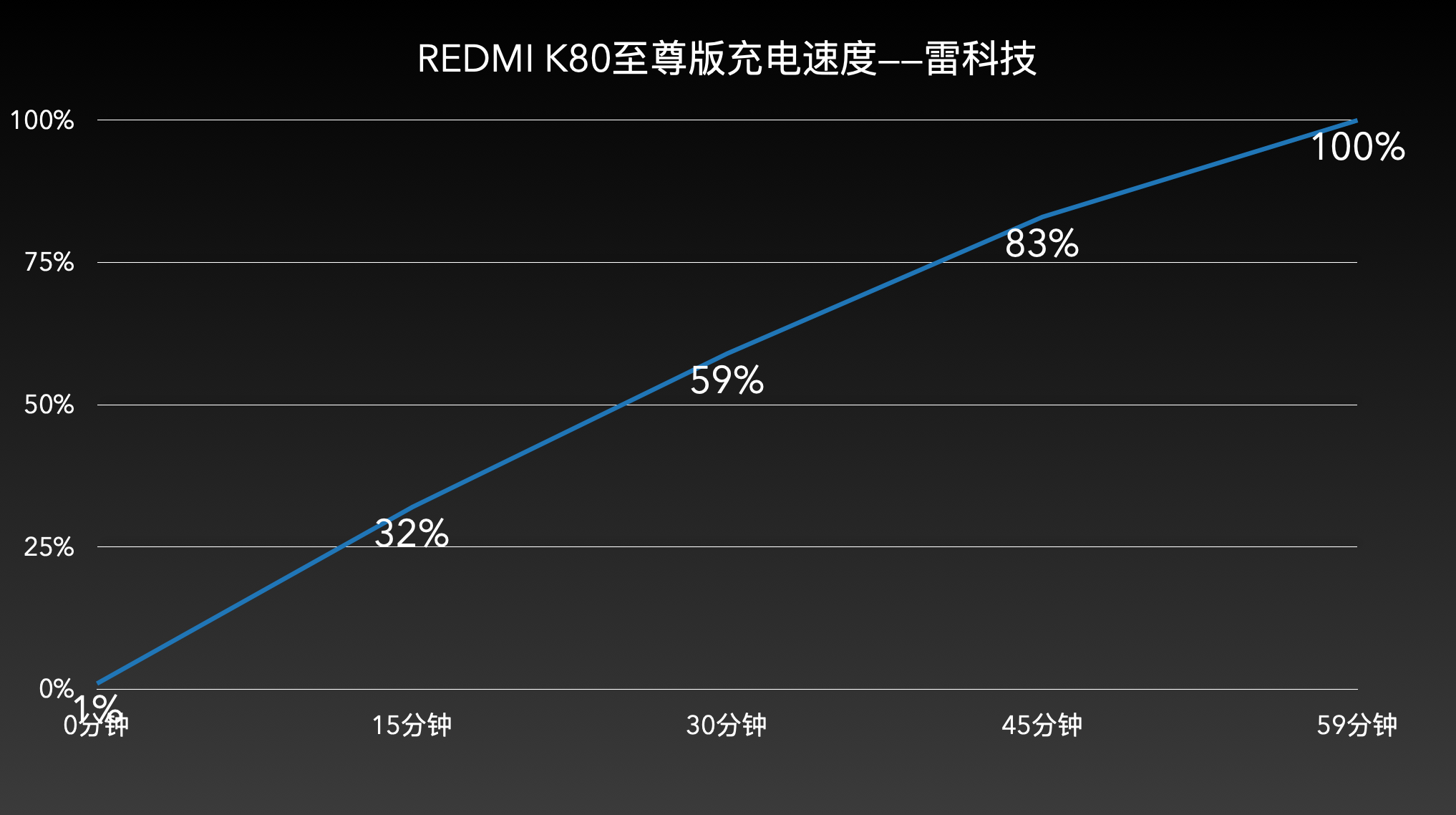
(Image source: Leikeji graphic design)
The actual test shows that it only takes half an hour to charge 59% of the battery for the Redmi K80 Supreme Edition, and it takes 59 minutes to fully charge. Although it takes up to an hour, considering that this is a 7410mAh battery, it may be the
The REDMI K80 Supreme Edition is equipped with the highly acclaimed bypass charging technology, dubbed by REDMI as "Game Buffered Charging." Its principle is straightforward: it routes the charging current around the battery, directly powering the phone's motherboard. This innovative approach drastically minimizes the heat generated when charging and using the device simultaneously, thereby extending the battery's lifespan. This feature stands out as a top priority for mobile gaming enthusiasts.
Summary: A fitting conclusion to the K80 series
In keeping with our usual practice, let's encapsulate the REDMI K80 Supreme Edition:
Strengths:
1. Rugged design, tailored for gamers;
2. Exceptional performance, capable of handling top-tier graphics in various mainstream games seamlessly;
3. Impressive frame interpolation and super-resolution with minimal power consumption increase;
4. Remarkable battery life, a delight for those who cherish long-lasting power.
Weaknesses:
1. Average camera performance.
Historically, the term "Supreme Edition" might evoke an image of "performance above all else" among readers. However, REDMI has repositioned this series as a balanced flagship, prioritizing performance while not neglecting other aspects. The REDMI K80 Supreme Edition harmoniously integrates the Dimensity 9400+, a colossal battery, enhanced performance output, robust cooling, the industry's most potent motor and speaker, all within a single device. Furthermore, its metal frame and high-quality eye-care screen solidify its status as a well-rounded flagship.
For the REDMI K80 series, the K80 Supreme Edition serves as a comprehensive addition. If you seek a balanced phone that offers an immersive gaming experience and covers all daily usage scenarios, the REDMI K80 Supreme Edition could be your ideal choice.

